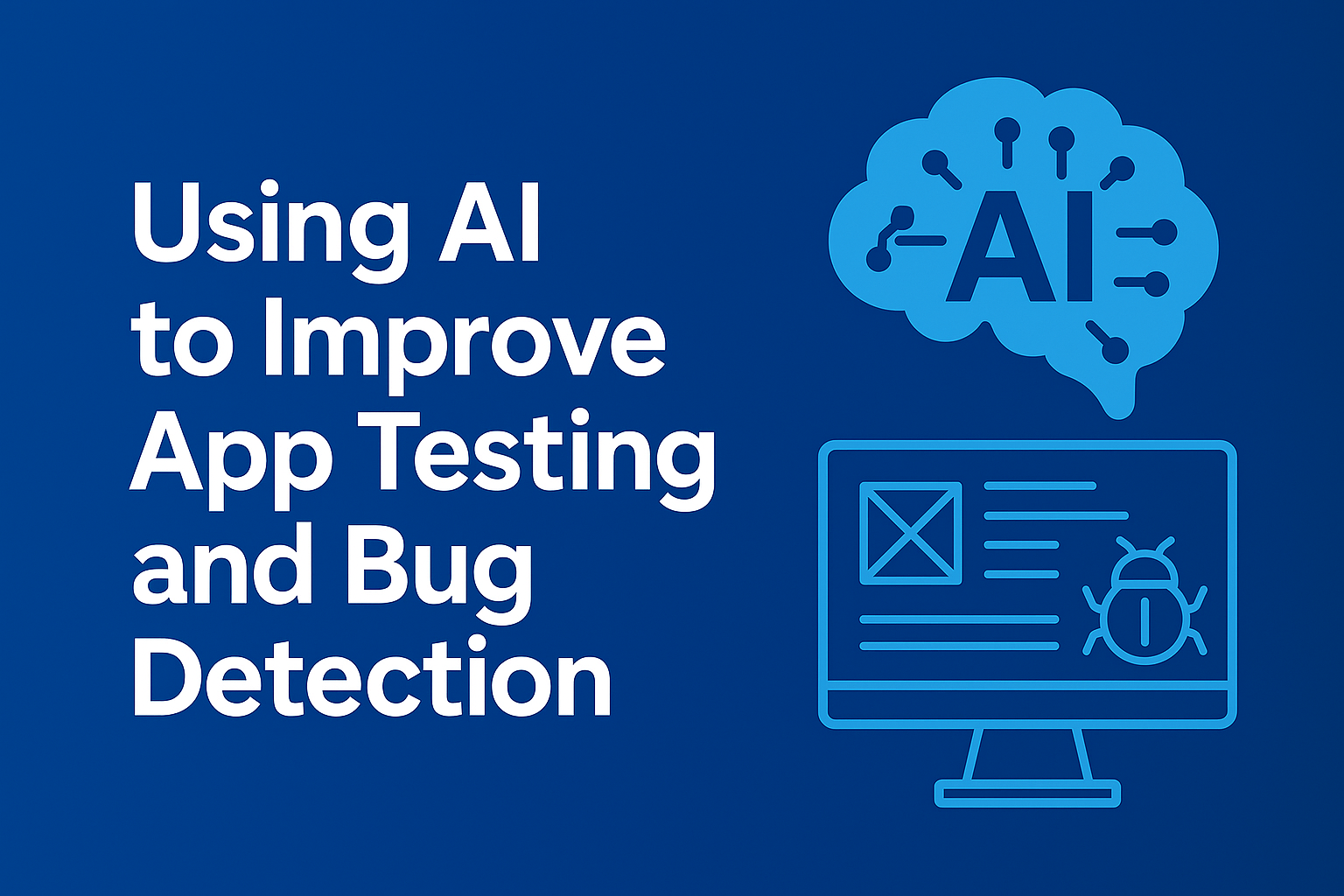Using AI to Improve App Testing and Bug Detection 🧪🤖

App testing is one of the most critical — yet time-consuming — phases in development. From catching UI glitches to identifying deep logic bugs, the process can be repetitive and prone to human error. That’s where AI steps in.
With AI, we’re not just automating tests — we’re making them smarter, faster, and more accurate. Let’s explore how artificial intelligence is transforming the way we test and debug applications. 🔍
What Does AI-Powered Testing Really Mean? 🧠🧪
AI in app testing refers to using machine learning algorithms, predictive models, and pattern recognition to optimize testing strategies, detect bugs early, and reduce manual effort.
- It’s not about replacing QA engineers — it’s about empowering them. 🛠️
- AI can analyze user flows and generate tests automatically.
- It can prioritize tests based on risk and coverage.
- It detects anomalies and UI changes using visual testing.
- It predicts potential bug zones using historical commit data.
Where AI Is Enhancing App Testing 🚀
Here’s how AI is reshaping modern testing workflows:
-
🔁 Automated Test Generation — AI learns from user behavior and creates end-to-end test cases.
-
🔍 Visual Regression Testing — Tools like Percy and Applitools use AI to spot even pixel-level UI differences.
-
⚙️ Smart Test Prioritization — Machine learning identifies which tests are more likely to fail based on recent code changes.
-
🧭 Bug Prediction — Analyzes code quality metrics, version control history, and error logs to predict where bugs are likely to appear.
-
📉 Noise Reduction in Logs — Filters out irrelevant logs and highlights anomalies that devs should focus on.
Benefits of AI in Testing and Debugging 🌟
Using AI for testing isn't just a cool trick — it’s a game-changer.
-
🚀 Faster release cycles
-
🧠 More intelligent and targeted testing
-
📉 Fewer missed bugs
-
🔄 Continuous improvement via learning from past bugs
-
👩💻 Reduced manual workload for QA teams
Popular AI Testing Tools 🔧
Let’s take a look at some AI-driven tools making waves in testing:
-
Testim — Self-healing UI tests and smart locators.
-
Applitools — AI-powered visual testing for responsive UIs.
-
Mabl — Intelligent browser testing with auto-maintenance.
-
Diffblue — Java test generation using AI.
-
BugSnag + ML — Prioritize bugs by user impact using machine learning.
These tools don’t just run tests — they learn, adapt, and guide the dev process. 🧠⚙️
Best Practices for Embracing AI in QA ✅
Want to make the most of AI in your testing pipeline? Keep these tips in mind:
-
🧪 Start small — integrate AI tools into existing test flows.
-
🔄 Don’t rely solely on AI — keep manual and exploratory testing.
-
🧠 Train models with quality historical data.
-
📈 Monitor and audit AI suggestions for continuous accuracy.
-
🤝 Involve devs and QAs in tool evaluation and feedback loops.
Real-World Use Cases 🌍
-
An e-commerce app reduced production bugs by 60% by using AI to generate test flows from real user behavior.
-
A banking app used AI visual regression to catch layout issues across 20+ screen sizes.
-
A SaaS platform used predictive bug detection to identify high-risk commits before they reached staging.
These examples prove that AI doesn’t just test faster — it tests smarter. 🎯
Final Thoughts 💭
AI is rapidly transforming app testing from a tedious checklist into a smart, dynamic, and proactive process. With AI handling the repetitive grunt work and surfacing insights from mountains of data, dev and QA teams can focus on delivering flawless user experiences.
Whether you’re building a mobile app, web platform, or enterprise tool — now’s the perfect time to explore AI-powered testing. 🧠🧪
The future of quality assurance is already here — and it’s intelligent, adaptive, and lightning-fast. ⚡